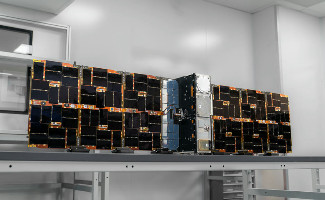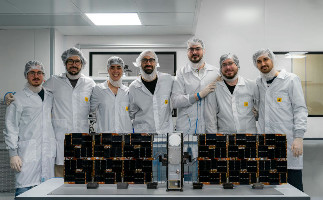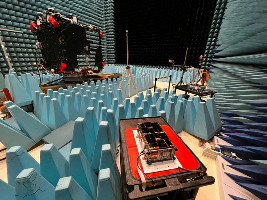| Satellite | Milani (Hera's Milani CubeSat) |
|---|---|
| Form factor | CubeSat |
| Units or mass | 6U |
| Status | On spacecraft (On Hera, to be released in early 2027) |
| Launched | 2024-10-07 |
| NORAD ID | On spacecraft |
| Deployer | Deep Space Deployer (DSD) [ISISpace] |
| Launcher | Falcon 9 (Hera) |
| Organization | Politecnico di Milano |
| Institution | University |
| Entity type | Academic / Education |
| Nation | Italy |
| Manufacturer | AIVT by Terran Orbital |
| Operator | In-house? |
| Oneliner |
Companion CubeSat to Hera spacecraft to map Didymos and determine composition. |
| Description |
Global mapping of Didymos (primary) and Dimorphos (secondary) asteroids. This involves determining the composition difference between the bodies and the study of their surface properties. In the context of the AIDA international collaboration, Milani will help at determining the composition of the ejecta created after the impact of DART spacecraft in 2022 on the surface of Dimorphos, and their fallbacks on the surface of the asteroids. In terms of the technological objectives, the mission will be among the first to operate CubeSat technologies in deep space and the rst to use Inter-Satellite Link (ISL) network with the mother spacecraft in such challenging context. Main payload aboard Milani is the ASPECT hyperspectral camera. The characteristics of the ASPECT camera are reported in Table 1. The payload has three channels, which are the Visible (VIS), the Near-Infrared (NIR), and the Short Wavelength Infrared (SWIR). The three channels have different characteristics, especially in terms of eld-of-view and sensor size. These quantities affect the allowed orbital ranges to the targets for scienti c observations. The visible channel has the largest field of view and a 1 Mpx sensor size. The NIR is narrower than the VIS channel, while the SWIR is a mono-pixel circular FOV channel. In addition to ASPECT, which is used for scienti c imaging only, Milani hosts two additional cameras, which are used for optical navigation. The overall Milani consortium is made up of 12 companies and research institutes in Italy, the Czech Republic and Finland, as follows: Tyvak International (Italy); Politecnico di Torino (Italy); Politecnico di Milano (Italy); Centro Italiano Ricerche Aerospaziali, CIRA (Italy); Istituto Nazionale di Astrofisica, INAF-IAPS (Italy); Aerospace Logistics Technology Engineering Company, ALTEC (Italy); VTT Technical Research Center of Finland (Finland); University of Helsinki (Finland); Institute of Geology of the Czech Academy of Sciences (Czech Republic), Reaktor Space Lab (Finland), Brno University of Technology (Czech Republic); HULD (Czech Republic). |
| Notes | |
| Sources | [1] [2] [3] [4] [5] [6] [7] [8] [9] [10] [11] [12] [13] [14] |
| Photo sources | [1] [2] [3] [4] [5] [6] [7] [8] |
| Keywords | Beyond Earth orbit, Propulsion |
| On the same launch |
Last modified: 2025-01-01
















